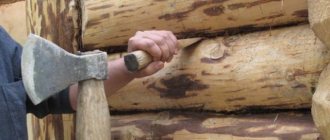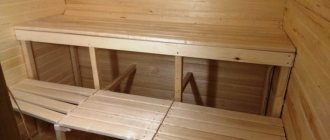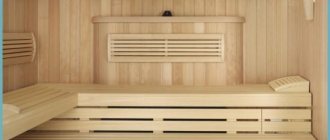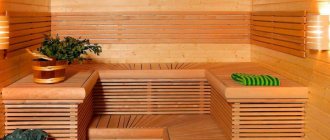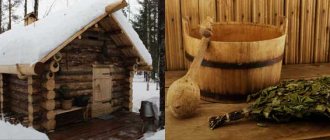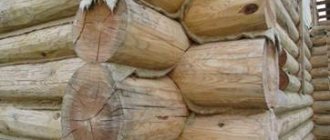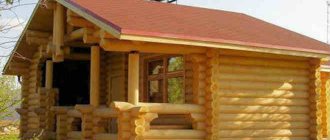How can you caulk a log house?
There are natural materials for caulking and artificial ones. The first include tow, hemp, jute, moss, and so on. The latter include industrial sealants. Sealants are easier to work with and apply quickly. As a rule, in order to reduce their consumption, a cord is laid in the inter-crown gap, and the sealant, which is distributed with a special spatula before hardening, is applied on top of it.
However, sealants have a number of disadvantages:
- Some brands are afraid of exposure to ultraviolet rays - this leads to their destruction. This drawback can be eliminated by hiding the sealant seams under the strips.
- Some of them, after hardening, create a monolithic material that interferes with the process of expansion or contraction of wood, for example, due to weather, which can lead to the destruction of nearby fibers. To prevent this fact, it is better to purchase elastic sealants.
You can learn more about how to operate the sealant by watching the available video material. A simple tablespoon is perfect for distributing the sealing agent.
If, when determining how to caulk a bathhouse, you chose a sealant, then carefully study the instructions and make sure that it can be used with exactly the type of wood from which your log house is made, that it is suitable for your region, and also has all the necessary characteristics.
It is advisable to use a synthetic sealant for a log bathhouse if it is used to close caulked cracks. After double caulking the log house with tow, moss or jute, wait until the log house finally settles and reaches working dimensions. Next, a cord is inserted into the seams and covered with sealant.
Each of the natural materials for caulking has its own positive and negative qualities, and preparatory measures are required in any case.
Moss
Moss is considered the most common, time-tested material for caulking. It has been used for hundreds of years. Currently, there are many other materials, but they all have slightly worse characteristics. True, new materials are easier to operate, and they also have such positive qualities as antibacterial properties and special resistance to rotting.
Before caulking a log bathhouse with moss, it must be dried and soaked right before use. This action will give the moss fibers elasticity. The moss is laid out in a layer and leveled so that its ends hang down on both sides of the beam. After all the logs have been laid out, the excess moss fibers are shortened, and what remains is wrapped and tucked into the cracks. Thus, the first stage of caulking the log house is carried out. Further stages of caulking will be continued after a year and a half.
Basic principles
The quality of the log house's assembly is determined by how the crowns are laid. It is important not only to cut out the bowls and grooves correctly, but also to lay inter-crown insulation between two rows of logs or beams.
The insulation is installed during the assembly stage of the log house
What it will be - moss, tow or jute - is up to you, but such a layer must be present. When building a log house, you need to lay insulation in two layers:
Please note that when using moss or tow, there is no need to “tap” the material. When tapped with a hammer or an ax butt, the moss fibers break and dents form on the wood, which are directed across the fibers. Such damage can lead, in the future, to the development of foci of rotting. It is enough to simply compact the fibers with the palm of your hand, leveling and probing the layer; if you come across large foreign objects (cones or sticks are often found in moss), simply remove them.
Laying moss when assembling a log house
When using tape insulation, you can fix it using a construction stapler - damage to the wood from the staples is minimal, and the material is held securely. It is advisable for two people to lay the “insulated” crowns so that they can take the log from both ends and lower it so as not to move the insulation.
Jute
Recently, builders are increasingly asking the question of how to caulk a bathhouse with jute. Given that we mean rolled material. Jute fiber has excellent thermal insulation properties and contains natural binding resins. Jute is practically not afraid of moisture, and very rarely becomes unusable due to rotting. Even in conditions of high humidity it does not get wet.
Jute comes in several varieties:
- Jute tow . During the production of this material, the fibers are not torn, but combed, aligning them in the desired direction. This preparation of the material allows it not to lose all its properties. However, jute is not very convenient for caulking, because it is hard and has a low density; caulking has to be done several times due to the material drying out, the impossibility of obtaining a tight seam the first time, and birds pulling it apart for nests.
- Jute felt . This material is based on 90% torn jute fiber, and is supplemented with 10% long flax fibers. The result is a dense and flexible material that is much easier to work with. But if it has a short fiber length, it may get confused and fall out. When choosing jute, you should choose a material with a fiber length of at least 20 mm to obtain maximum elasticity. Short material will not have the necessary properties; it will either fall out or be blown away by the wind. Another disadvantage is the fact that moths can appear in it. In this regard, it is recommended to impregnate such material before installation with a composition against moths and against rotting.
- Flax-jute . It is a composite tape material, half of the volume of which is soft flax fibers, and the rest is hard jute fibers. This material is of interest to many builders, but it also has disadvantages, such as a tendency to rot and moth damage. That is, like the previous material, this one also needs to be treated with mixtures against rotting and pests.
Selection of material
Forest moss is the most traditional material that our great-great-grandfathers used for caulking log houses. This is the most environmentally friendly material of all analogues used, since it is of natural origin, assembled by hand and is not treated with chemicals. It has bioactive properties - it does not grow moths and mold.
Moss is especially valued for its antiseptic properties - it does not rot even when exposed to high humidity. At the same time, moss caulk is not only not susceptible to rotting, but also protects nearby areas from damage, which is especially important for insulating a bathhouse.
Also, using moss as a material for caulking allows you to significantly save on the purchase of material, since it can be collected in the nearby forest with your own hands. Even if this is not possible, its price in stores is quite affordable. Natural moss is the most rational solution to the question, what is the best way to caulk a bathhouse?
The most common material for log caulking due to its cost, but flax has the lowest quality characteristics. Before caulking a bathhouse with flax, you should take into account that it contains practically no natural antiseptics - therefore, putrefactive bacteria, which damp wood contains in abundance, will quickly destroy the formed seam, after which nearby areas will undergo degradation.
It quickly deteriorates under the influence of high humidity - its service life is from 1 to 3 years, after which the seam begins to crumble. Insects love it - moths, beetles; in its raw state, mold and mildew quickly grow. Without chemical treatment, you may find a large number of insect larvae in it the next season of operation.
Note! Some of the disadvantages of this material can be mitigated through chemical impregnation, but this will negatively affect the atmosphere of the bathhouse.
Of all the analogues used, flax can be called the most undesirable solution to the question: how to caulk a bathhouse?
Recently, experts have expressed their opinion on the question of what is the best way to caulk a log house for a bathhouse? — is increasingly leaning in favor of jute fiber, which recently appeared on the domestic market.
And this is not without meaning - natural jute is a durable material containing a large amount of natural lingin, which gives it water-repellent properties. Also, jute is much less damaged by insects than flax.
Note! Not to be confused with jute felt, which contains a certain proportion of flax, and accordingly all its negative qualities are present. It is quite simple to distinguish them from each other - 100% jute is gray in color.
Tow
This material is waste generated after the primary processing of natural fibers. The logs are caulked with jute, hemp and flax tow. The properties and quality of such material are determined by the raw materials, the length of the fibers and the level of their purification. During production, tow is pressed into blocks. To use it, you need to pull a strip of material from the block, twist it into a rope and place it in the seam. Although, it is easier to use tow sold in rolls.
In general, tow is not very convenient to work with, since it is very difficult to get an even seam. When caulking a log house, due to the high rigidity of the material, it is difficult to obtain a tight seam from the first approach. We have to resort to a repeat process. If you decide how to properly caulk a bathhouse by choosing between moss and jute tow, then you can confidently say that it is better to choose moss, since it does not harbor fungus and bacteria.
Tools
To carry out the procedure for insulating inter-crown seams, the following materials and tools will be required:
- type-setting caulking is a tool that looks like a chisel, with which you can insulate gaps of various widths (from 2 to 10 cm);
- split caulking - is a thick narrow wedge for expanding excessively narrow gaps, allowing them to be filled more easily and with better quality;
- a flat chisel with a blade 50-60 mm wide and up to 5 mm thick - used for laying the seal in the corners and rounded parts of the log house;
- mallet - is a wooden hammer used to hammer in the seal;
- road builder - a type of caulk for forming even rollers from twisted heat insulation;
- hammer - they hit the mallet with it, driving the seal into the inter-crown space;
- insulation.
Experts recommend using wooden caulking, as this protects the frame from damage. The blades of the tools should not be serrated as they will catch the material and pull it back out.
At what stage can you start caulking a bathhouse?
If the frame was laid on moss or tow, pieces of material of various lengths protrude between the crowns. In this case, you can begin the initial caulking: trim off the excess fibers, and hide the rest in the seams. You should be careful and take your time, adhering to the rules of caulking. If the log house was laid on tape insulation, then further operations are not necessary.
The first caulking is carried out about 6 months after the construction of the log house walls. During this period, almost all the moisture will leave the logs, new mother-in-law will be visible, and most of the crowns and corners will shrink. After this, you can begin installing doors and windows.
Further caulking is carried out after 12 months. During this time, the log house will be completely stable, so that all found defects can be eliminated. Based on the selected material and the quality of the work performed, you may need a new caulk in about 5 years. Sometimes, due to negligent construction work or if insulation was not laid between the crowns, caulking has to be repeated several more times, every year.
Summarizing the above
The caulking of the bathhouse, according to all the rules, retains thermal energy in the bathhouse and significantly extends its service life.
Improperly carried out work on insulating a building will lead to its rapid cooling, rotting of the log house and the breeding of pests in it. Remodeling takes a lot of time, effort and material costs. Properly performed work will help increase the service life of the bathhouse. The erected structure will delight you for many years with its warmth, power and solidity.
Proper insulation of a bathhouse can be the key to its good quality and optimal heat retention. You can caulk the walls of such a building yourself, thereby significantly saving money
It is important to know well the basic rules of the process. Typically, such work extends significantly over a long period.
How to calculate tow for a bathhouse
Before caulking a bathhouse with tow, you should decide on the required amount. Tow compresses quite well, so it is consumed quite heavily. Perhaps no one can say the exact figure. This is because there are a lot of nuances that influence this: the material of the log house, what grooves are cut into them.
If the grooves were made manually, then, often, the consumption of tow will be large. In addition, consumption increases if a sanded log was used rather than a rounded one. Less material will be used for the timber, although in this case its quantity will be determined by the parameters of the timber, the depth and number of cracks that appeared during the drying process.
Caulking technology
Before caulking the log house of a bathhouse, you need to study the basic rules of this process. In fact, caulking a log house is quite easy, but it takes a lot of time, and you also need to be patient. For a bathhouse with dimensions of 5x4 m, one person will need about 10 days, spending 7-8 hours daily.
At the same time, you should not overdo it when laying insulation, since this fact leads to the fact that the log house becomes 15 cm or more higher.
The basic rules for caulking include the following points:
- First of all, they start with the lower crown, moving along the entire perimeter. First, the outer part of the building is processed, after which they move on to the process of caulking from the inside. Only after this can you move on to the next crown.
- When caulking, special attention should be paid to the corners, because in such places, as a rule, the largest cracks are located.
- If this is the original caulking, then first of all the sagging material is picked up, folded and pushed into the gap. You can resort to any tool as needed. The process is carried out in stages - after the meter is processed, they move on to the next section.
- On the same area you can use a caulk, a hammer or a wooden mallet; the latter is much easier to work with. The caulk is beaten until it begins to spring back. After this they move on to a new area.
- Following the compaction process, cracks may appear into which fragments of insulation are inserted. If tow was used, a rope of a certain thickness is rolled up from it or a fragment of a specific length is disconnected from the tape, which is also driven in with caulk and a mallet until a springy effect is achieved. This operation is repeated until all the cracks are filled, after which you can move on to a new area.
Like any other part of construction work, caulking requires certain skills from the master. Based on the fact that there will be quite a lot of such procedures, after some time you will definitely develop them. Over time, as you gain experience, you will notice more and more new inaccuracies that were made in the initial stages of work.
You can eliminate them without much difficulty, bringing the work to almost perfection. Actually, those who do nothing make no mistakes, so caulking a log house with the proper quality is possible even without sufficient experience.
Features of the construction process
A set of tools for caulking work: 1 - stacked caulking, 2 - crooked caulking, 3 - road worker, 4 - split caulking, 5 - mallet or mushel.
Basically, the construction of a log house can be described in the following stages:
- preparation of the log house: assembling the crowns into a single structure;
- designation of log markings and frame disassembly;
- moving the block to a permanent location, assembly;
- insulation of the bath. Sealing gaps.
Great attention should be paid to caulking the building. And not just because it's beautiful. This seemingly insignificant and insignificant process of insulating a building is actually the main factor in its good quality and heat retention
This seemingly insignificant and insignificant process of insulating a building is actually the main factor in its good quality and heat retention.
It is best to insulate the log house at the time of construction of the bathhouse. A later process will be associated with significant material costs. Caulking this room is an integral attribute during its construction. Such a log bathhouse will delight you with its warmth and solidity.
Insulation of a building is a process that is associated with the careful placement of thermal insulation materials. You can seal cracks using special tools. This is a wooden spatula with a pointed base at the end, a beater or other devices. Properly performed insulation of a bathhouse will affect its durability. If the insulation of a building is not carried out correctly, the wood may rot and be eaten by insect pests.
This is interesting: Unusual baths: we consider in detail
